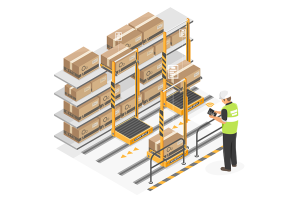 By Michael Healy
By Michael Healy
Interview with Chimae Gonçalves
SupplyChainPartner.com sat down with its director and procurement guru Chimae Gonçalves to ask a few pertinent questions around procurement technology implementation:
Calming the storm
Q: What is the biggest area of resistance when proposing a technology solution to a potential client?
A: Although we aim to communicate our offering in line with a customer’s pain points as clearly as possible, there are a few universal questions that we usually find most customers asking. They want to know whether the project will be successful, whether the price justifies the solution, whether the solution will deliver on the proposed business case, whether employees will embrace the change, how long it will take before the solution is running smoothly, how sure they can be that the solution will succeed and whether it will make them look good in the eyes of their colleagues.
What are we missing?
Q: Which areas of business are most overlooked by a company that S2P/SCP presents our services to?
A: We usually find that the two main overlooked areas are procurement as a whole and compliance/fraud.
With regards to procurement: traditionally, procurement skills have not been strategic. Businesses think that it is cheaper to add more bodies to do the work than to buy a system to automate their processes.
Some businesses focus on strategic procurement, yet do not have a handle on procurement 101 basics. There are some key questions that one needs to ask during the procurement process. For instance, are you paying the right price for the right product, at the right time, from the best possible supplier in terms of value in a compliant way? Very few businesses have a handle on this. Most end-users have no clarity in terms of how long their order will take, who still needs to approve the order, if they will even receive the correct product, whether they will pay a fair price, whether the supplier is a good supplier or if the product has been ordered and whether the supplier has been paid.
Concerning compliance and fraud: if you do not have an automated way to ensure that your business processes comply to policies and procedures, you have no idea whether you comply or how big the fraud problem is. There is no visibility, which means that you have no idea how big the problems are (and some people prefer to be ignorant). Once you know, you have to do something about it. Ignorance is bliss.
Ouch!
Q: Are the pain points described by a potential client, usually ring-fenced, or do the issues have a domino effect and negatively influence business areas that are not initially obvious to the client?
A: The effects of an untransformed/rogue procurement process cannot be ring-fenced. Issues have a domino effect and can negatively affect many business areas. In my experience, these are some of the knock-on issues that you may encounter owing to a rogue procurement process:
– The end-user does not receive what they expect
– Sometimes, in relation to critical parts, there are manufacturing delays and business failure owing to productivity issues
– Non-compliance and opportunities for fraud can lead to reputational risk
– Procurement is at the heart of any successful business thus managing your spend wisely will either make or break your company
The more things change, the more they…change
Q: How big a part does change management play during the implementation of procurement technology?
A: Most of the emphasis when it comes to successful procurement technology implementation is on stakeholder engagement. I have never been part of a project where there has been enough stakeholder engagement. Most organisations battle with communication and buy-in. Most people resist new things (all for very different reasons, some very legitimate). The key to a successful procurement transformation project is well-defined strategy that is communicated in a collaborative way. Modern organisations are moving away from hierarchies to networks. Managing change is not linear. It is dynamic and many decisions influence many different end-users. Success does not always mean that all stakeholders will be satisfied with the decisions made; success involves more than one person’s opinion.
We love a challenge
Q: What is the biggest challenge we face once a project has been given the go-ahead, before implementation can start?
A: Managing expectations and client involvement. Often a business does not understand that we cannot necessarily do the implementation “to” them. We need to do it “with” them. This means that they need to be involved in the process. They need to commit their own time and resources. Strong leadership is vital and commitment to engage the correct stakeholders is critical to the success of any project.


























